LCA & EPD EXPLAINED
Just starting on your LCA & EPD journey?
Here’s an explanation of elements involved in the process.
Just starting on your LCA & EPD journey?
Here’s an explanation of elements involved in the process.
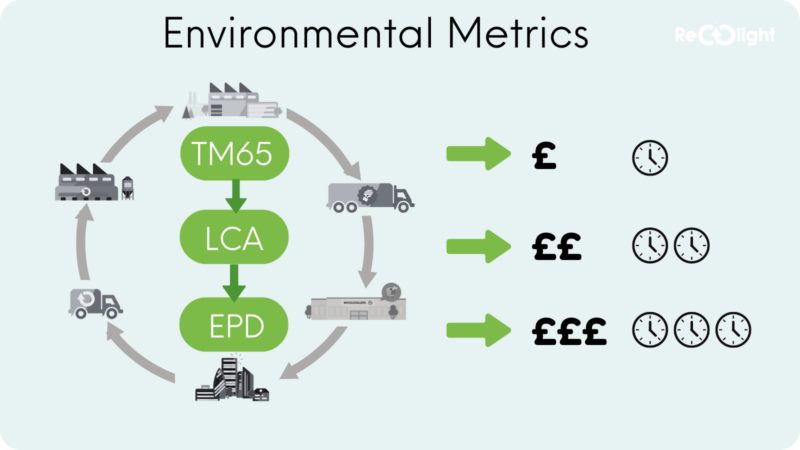
Life Cycle Assessment is a methodology for assessing environmental impacts associated with all the stages of the life cycle of a commercial product, process, or service.
Environmental impacts are assessed from raw material extraction and processing (cradle), through the product’s manufacture, distribution and use, to the recycling or final disposal (grave).
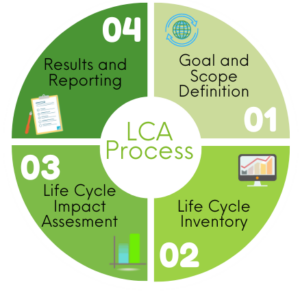
The LCA follows a systematic approach that involves four main components:
LCA is the assessment methodology
this can be a stand-alone study
As part of the LCA, the environmental impact assessment groups different emissions into one effect on the environment. Different emissions that cause the same impact- are converted into one unit that translates into one impact category.
For example, the impact category ‘climate change’ is expressed in kg CO₂ equivalents (kg CO₂-eq). However, other greenhouse gas (GHG) emissions also cause climate change, such as methane (CH₄).
By expressing all GHG emissions with different measuring units in kg CO₂ equivalents. An impact category makes it possible to come to a single metric for climate change.
The environmental impact of a product or service cannot only be captured by its global warming potential (CO2 equivalents) as there are many other environmental impact categories which should be considered.
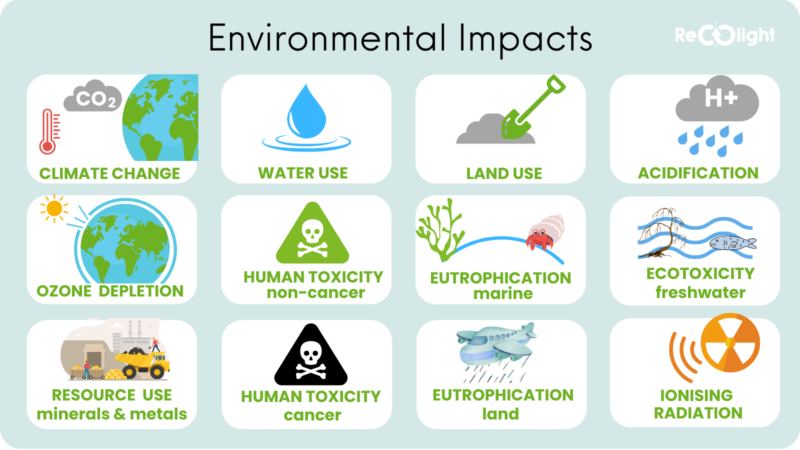
Using an LCA, a manufacturer can measure a product’s impact across all categories. An LCA also allows a company to model the implications of a potential change to a product. For example, this could be the use of an alternative component material or manufacturing process. These can often be associated with environmental tradeoffs (e.g. a design measure that decreases climate impacts but increases toxicity impacts).
This way, product designers can still choose to prioritize climate impact, while also being aware of the impact on other categories.
Each category is calculated based on all the emissions which contribute to that impact. For example, the impact category ‘Global Warming Potential’ (GWP) is expressed in kilograms of CO₂ equivalents (kg CO₂-eq). However, there are other greenhouse gases which have global warming potentials too. These are each converted into the equivalent amount of CO2 which has the same potential impact. The same calculations are conducted for each impact category.
Given that each impact category has different units, they cannot be combined as one ‘total’ impact value. Therefore, LCA results are typically reported as tables of data, although GWP always takes the limelight.
To understand truly the impacts of manufacturing a product, the entire life cycle should, ideally, be considered.
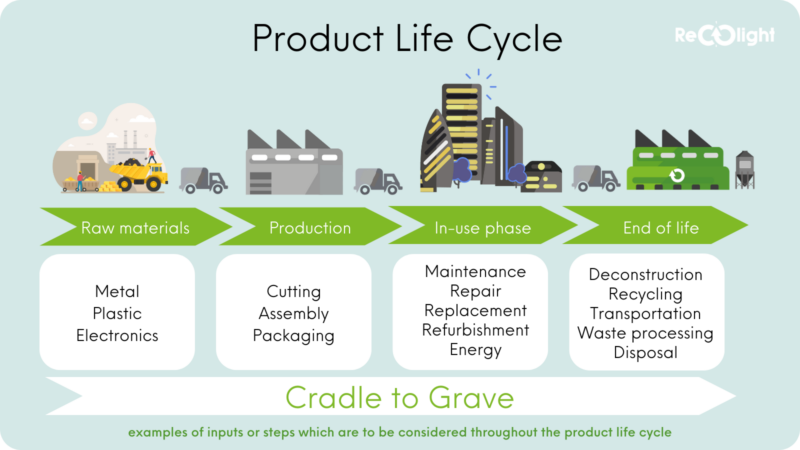
An Environmental Product Declaration (EPD) is a transparent and verified environmental declaration which contains quantitative information about a product’s lifecycle. The information declared within an EPD is calculated using the LCA methodology. Therefore, an EPD report requires an LCA study.
An EPD is defined by the International Organization for Standardization (ISO) 14025 as a Type III declaration that
“quantifies environmental information on the life cycle of a product to enable comparisons between products fulfilling the same function.”
The EPD methodology is based on the LCA tool that follows ISO series 14040.
LCA
EPD
The EPD consists of two key documents:
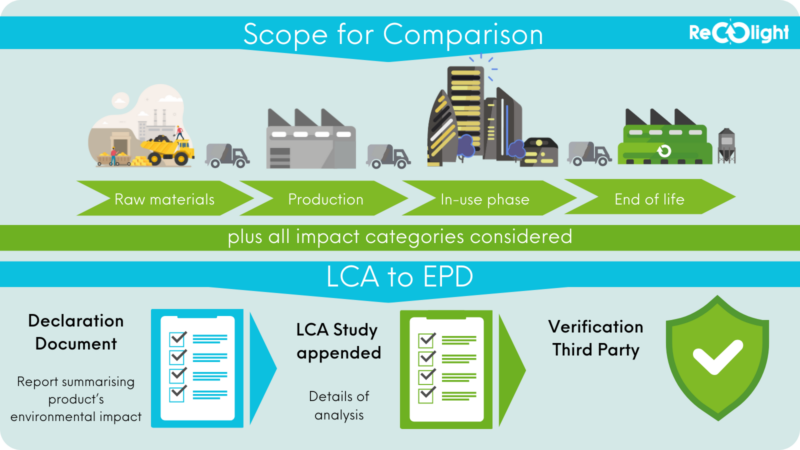
Product category rules are the requirements and guidelines required to develop an EPD for a specific type of products.
For electrical & electronic products, the PCR were developed by PEP Ecopassport® ‘Product category rules for electrical, electronic and HVAC-R Products, this is referred to as PCR-ed4-EN-2021 09 06.
Within this product category, there are product specific rules (PSR) which provide more technical guidance for specific products. PEP Ecopassport® have published a PSR for luminaires which is referred to as PSR-0014-ed2.0-EN-2023 07 13, commonly known as “PSR-0014”.
Following Product Category Rules allows for EPDs of multiple products which serve the same function to be better compared for their environmental metrics.
Following Product Category Rules allows for EPDs of multiple products
which serve the same function to be better compared for their environmental metrics.

